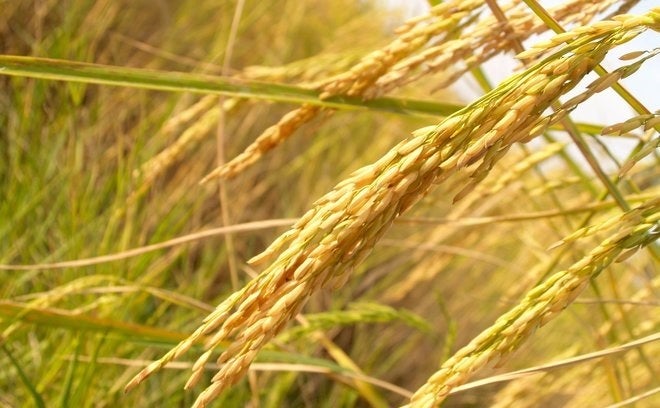Agriculture matters, both to Haiti and its new president. One of the biggest issues is tariffs and subsidies. Twenty years after tariffs were dropped, the impact continues to be discussed and debated.

The research project Haiti Priorise sets out to introduce new data on costs and benefits that helps decision-makers to focus on the soundest policies and investments for the nation.
The government, farming leaders, businesses and civil society all helped to identify the biggest challenges and most promising solutions, and the project has asked economists to examine these in-depth, to provide more data for Haitian decision-makers.
As agriculture is an important part of the Haitian economy, it has been studied by many experts for Haiti Priorise, with papers already released on “System of Rice Intensification”, agro-forestry and carbon markets, and agricultural research and development.
An approach that is likely to be much-discussed is a ten-year, 20 percent import tariff on imports of American rice, which has been studied by Professor Tim Josling of Stanford University.
In the first year, a tariff would make farmers 1.7 billion gourdes ($25 million) better off. It would provide 11.7 billion ($170 million) of extra income over ten years. The government would collect 7.8 billion ($114 million) in revenue in year one, and 57.8 billion gourdes ($835 million) over a decade.
This sounds very positive. But surprisingly, the tariff would not do a lot to change the balance between domestic production and imports. Imports would still increase, and in ten years the expected harvest of Haitian rice would be 93,400 tons, compared to 84,900 tons without tariffs.
One reason for this is that there are many other challenges to increasing Haitian rice production, which the tariff wouldn’t solve.
Moreover, what is good for farmers is not always good for consumers. Importers of ‘Miami rice’ would pass on the cost increase to the consumers. In total, Haitian shoppers would have to pay 9.9 billion ($143 million) more for rice in the first year, and 72 billion gourdes ($1.04 billion) over ten years. This impact could be reduced if the government used its new revenue to make rice cheaper for consumers. This would cut the overall cost increase to consumers to around 13.9 billion ($202 million) but also entirely eliminate the revenue generated for the state.
Unfortunately, both with and without the state recycling the tariff back to the consumers, the policy would cost more to the Haitian economy than it would achieve. While it would benefit farmers, it would cost the consumers even more, meaning every gourde spent would achieve less than one gourde in benefits.
However, a rice tariff could possibly become moderately cost-effective. If it were to encourage farmers to improve their farming practices and become more productive, benefits would increase. However, the rice yield would need to increase by 20% for the benefits to begin to exceed the costs.
Professor Josling also studies how crop insurance could help Haitian farmers. Creating a simple insurance scheme could allow farmers to aim for higher yields because they would have a safety net when harvests are poor, with a guaranteed minimum income. The research finds that this policy could achieve a modest amount of good
Experience shows that compensating farmers from bad luck with insurance encourages extra risk-taking, which increases rice yields. Somewhere between 9 and 17 percent more rice would be produced in good years, according to the scenarios envisaged by Professor Josling.
The costs include startup costs, recurring costs, payments to farmers in poor years, and the premiums paid by farmers themselves (around 1,400 or $20 per hectare).
Total start-up costs for the scheme are 13.8 million ($200,000), with additional costs of 6.9 million gourdes ($100,000) and 3.4 million gourdes ($50,000) in the next two years, and a recurring cost of 3.4 million gourdes ($50,000). Insurance premiums would cost 9.4 million ($137,000) in year one, rising slowly after that. Payouts would be in the region of 1.2 billion gourdes ($17.5 million), when compensation is due. In total, the costs would run to 6.2 billion gourdes ($90 million) over a decade. But it would increase yields, meaning an average higher annual income of more than 692 million ($10 million). In total, including the insurance payouts, the benefits over a decade would run to 12.1 billion gourdes ($175 million). Professor Josling finds that each gourde spent will produce almost two gourdes of good.
A third policy emerges from his scrutiny with even higher marks: paying fertilizer subsidies to rice farmers. The subsidy would be worth half the market price for five years, and then decline by 10% increments to zero in year 10.
The proposed subsidy would cost 1.8 billion gourdes ($27.4 million) in the first year, and the extra fertilizer would cost 608 million gourdes ($8.8 million).
It is estimated that fertilizer sales would rise from 750 to 1,132 tons in the first year, while the cost to farmers would fall from 2.4 billion gourdes ($36 million) to 1.2 billion gourdes ($18.6 million).
Farm income would increase by 53 percent, as the rice harvest increases from 147,000 tons to 225,000 tons. The extra rice produced would be worth 7.8 billion gourdes ($112.6 million), and the reduction of the cost of fertilizer would be worth 1.2 billion gourdes ($18.6 million). Over a decade, the costs will run to about 16.3 billion gourdes ($236 million), with about two-thirds for subsidies and one-third for buying extra fertilizer. The benefit will amount to 61 billion gourdes ($884 million) over the decade, with about 10% from lower fertilizer costs and 90% from increased rice production. In total, each gourde will achieve 3.7 gourdes of good subsidizing fertilizer.
However, a word of caution on how to organize the fertilizer subsidy to actually get the benefits. Haiti has not had positive experiences with fertilizer subsidies since 2000, points out independent consultant Joel Le Turioner in an expert commentary also published by Haiti Priorise. Even subsidies of up to 50% did not help the development of fertilizer use in Haiti. Audits showed cronyism in distribution of subsidized fertilizer leading to its misappropriation. And because the subsidized fertilizer was bought and distributed by the state, often at short notice, other sellers imported less than they could have used out of fear of being stuck with unsubsidized, unsellable fertilizer.
This tells us that any policy needs to be carefully designed. Subsidies must be distributed in a way that prevents future cronyism and misappropriation, while allowing farmers access to more fertilizer. This could be achieved with subsidies taking the form of vouchers, giving control to farmers. This setup has been demonstrated in several projects with the Ministry of Agriculture, Natural Resources and Rural Development (MARNDR). Using such vouchers, Haiti can ensure that subsidized fertilizer won’t underperform like it has previously, but could help grow agriculture to produce more, and generate future benefits worth nearly 4 gourdes for each gourde spent.
This would help to expand the agricultural economy, and be good for all of Haiti.
